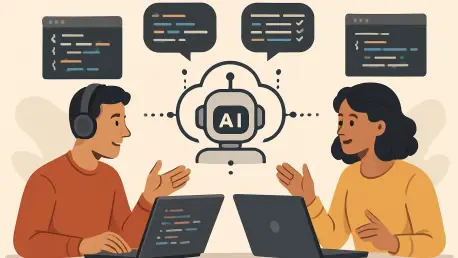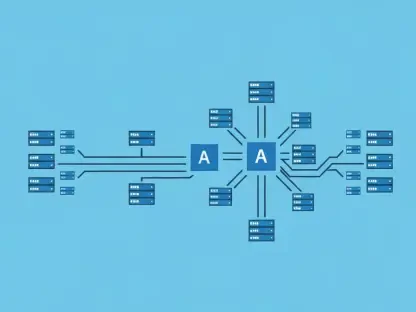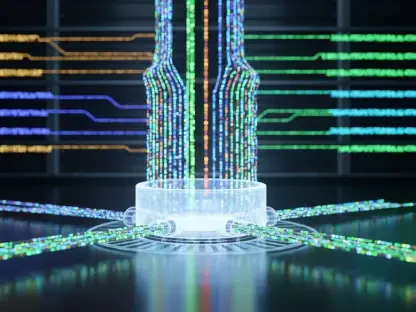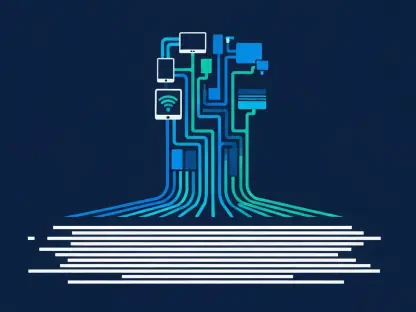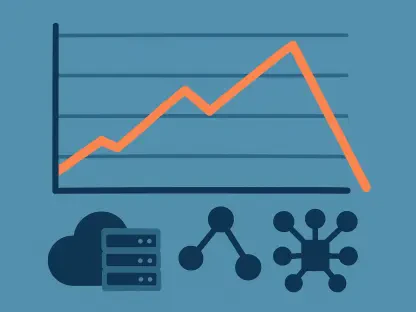The landscape of software development has undergone a seismic shift with the advent of AI coding assistants like GitHub Copilot, Cursor, and Windsurf, which can transform abstract ideas into functional applications in mere minutes through straightforward prompts, promising to cut coding time by as much as 80%. This statistic highlights the potential for unprecedented efficiency in an industry where time-to-market often defines success. However, for senior software engineers—those seasoned professionals who anchor complex projects with their expertise—this speed comes with significant trade-offs. These developers prioritize structure, control, and the long-term maintainability of code over mere rapid output. Current AI tools, often referred to as “vibe coding” solutions, frequently fail to meet these high standards, creating a rift between potential and practicality. As a result, a growing chorus of experienced engineers is calling for AI tools that do more than automate—they want true collaborative partners that align with their strategic approach to building robust, production-grade software.
Unpacking the Flaws in Today’s AI Coding Tools
The promise of AI coding tools is often overshadowed by their inability to accurately interpret a developer’s intent, a frustration keenly felt by senior engineers. Consider a scenario where a prompt as simple as “develop an endpoint for active users” results in code that defines “active” based on unrelated metrics, such as login frequency rather than subscription status critical to the project. Such misalignments lead to incomplete or incorrect solutions that demand extensive rework and debugging. Far from saving time, this process can erode the very efficiency AI tools are meant to provide, leaving developers skeptical of their utility in high-stakes environments where precision is paramount. The lack of context-aware responses in these tools underscores a fundamental disconnect, making it clear that speed alone cannot substitute for accuracy and relevance in professional software development.
Another critical shortcoming lies in the opacity of AI decision-making processes, which leaves senior engineers grappling with code they didn’t write and don’t fully understand. When a tool selects a specific library or structures a function in a particular way, it rarely explains why such choices were made, forcing developers to dissect unfamiliar code without insight into the underlying assumptions or trade-offs. This absence of transparency poses a significant barrier to maintainability, as integrating AI-generated code into larger systems becomes a gamble without a clear rationale. For professionals tasked with ensuring the longevity and reliability of software, this black-box approach is not just inconvenient but a genuine risk to project integrity. The need for tools that illuminate their logic is not a luxury but a necessity for fostering trust and enabling effective collaboration in development workflows.
Envisioning a New Era of AI Collaboration
Senior software engineers are advocating for a paradigm shift in AI coding tools, one that begins with structured planning and alignment before any code is generated. The vision is for AI to emulate the disciplined workflows of experienced developers by posing clarifying questions, breaking down complex tasks into manageable subtasks, and outlining a comprehensive plan that ensures the output matches the intended outcome. This proactive approach would shift AI from a reactive tool—where developers merely review and revise output—to a collaborative partner that engages in active problem-solving. By prioritizing planning over immediate coding, these tools could bridge the gap between a developer’s strategic intent and the AI’s execution, creating a synergy that enhances rather than undermines the development process. Such a transformation would mark a significant step toward making AI a reliable ally in tackling intricate software challenges.
Beyond initial planning, there is a pressing demand for AI tools to implement a continuous code-verify loop that mirrors the iterative nature of professional development. This means going beyond simply generating code to include rigorous testing, debugging, and refinement cycles until the output adheres to high-quality standards. Incorporating unit tests and functional testing across diverse workflows, along with providing detailed summaries of results and rationales, would significantly reduce the incidence of bugs and the burden of manual corrections. For senior engineers working on production-grade software, where reliability is non-negotiable, this process would ensure that AI contributions are not just fast but also dependable. The emphasis on iterative verification reflects a broader need for AI to adapt to the meticulous standards of experienced developers, turning raw output into polished, trustworthy code that can confidently be deployed in critical systems.
Fostering Trust with Context and Security
A cornerstone of the desired evolution in AI coding tools is the provision of contextual ownership for generated code, a feature senior engineers deem essential for long-term maintenance. This involves delivering detailed explanations of what was created, why certain methods or libraries were selected, and how the code aligns with overarching business objectives or navigates trade-offs such as performance versus readability. Tools that embed inline comments, offer code diffs, and maintain changelogs can transform AI output from an enigmatic puzzle into a transparent asset. Such features are vital for building trust among developers who must integrate and sustain code over time, ensuring they are not left guessing about critical decisions. By prioritizing clarity and documentation, AI can support the strategic oversight that senior engineers bring to their projects, making collaboration not just feasible but genuinely productive.
Equally important, especially in enterprise contexts, is the integration of robust security measures within AI coding environments to protect sensitive data. Senior engineers stress the necessity of sandboxed, isolated setups that prevent proprietary code from being uploaded to external servers, thus mitigating risks of data breaches or compliance violations. These secure environments would enable safe experimentation and testing, allowing developers to leverage AI capabilities without compromising organizational integrity. As software development increasingly intersects with stringent regulatory demands, the call for such safeguards reflects a broader industry trend toward balancing innovation with accountability. Addressing security concerns alongside contextual transparency ensures that AI tools can be deployed confidently in high-stakes settings, meeting the diverse needs of senior developers who must navigate both technical and ethical considerations in their work.
Charting the Path Forward for AI in Development
Reflecting on the discourse among senior software engineers, it becomes evident that the journey of AI coding tools has reached a pivotal moment where mere automation is no longer sufficient. The critiques of misaligned intent, unexplained decisions, and inadequate testing have underscored a collective frustration with tools that prioritize speed over substance. Yet, the dialogue also illuminates a shared aspiration for AI to evolve into a dependable partner, one that embraces structured planning, rigorous verification, and transparent documentation. In response to these challenges, the focus shifts toward actionable advancements—integrating iterative code-verify loops and secure environments has emerged as tangible steps to elevate AI’s role in development. Moving forward, the industry must commit to refining these tools to align with the strategic depth of seasoned professionals, ensuring that future innovations enhance decision-making rather than replace it. This evolution promises to redefine collaboration, turning AI into a catalyst for building software that is not only efficient but also enduring.
